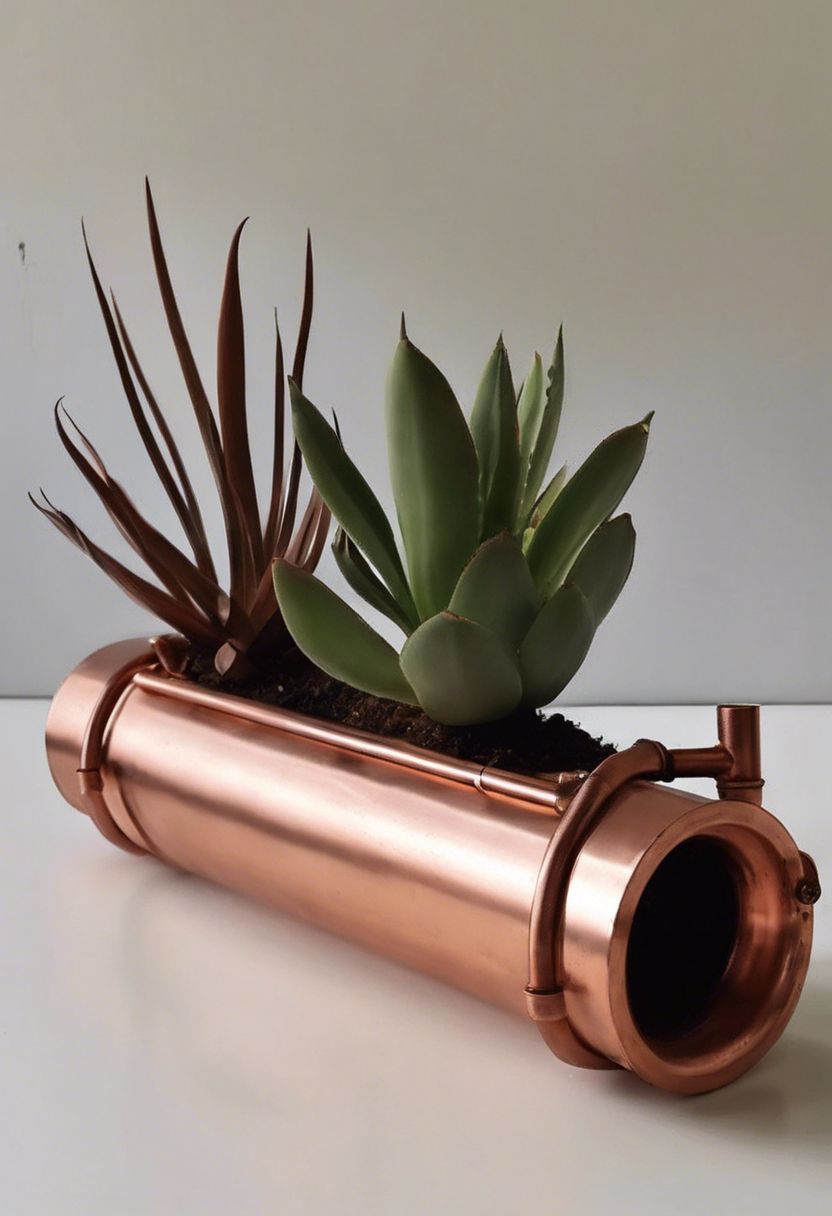
Copper pipes have become a popular choice for DIY planters, and one unique and eye-catching idea is the Succulent Copper Pipe Planter. This project involves cutting and filling copper pipes with succulents and mounting them horizontally on a railing or any other suitable surface. The result is a stunning display of greenery that adds a touch of elegance to any space.
Materials Needed
To create a Succulent Copper Pipe Planter, you will need the following materials:
1. Copper pipes – choose pipes of varying lengths and diameters to add visual interest to your planter.
2. Succulent plants – select a variety of succulents in different shapes, colors, and sizes to create a vibrant and diverse planter.
3. Soil – use a well-draining succulent soil mix, or create your own by combining potting soil with sand and perlite.
4. Epoxy adhesive – this will be used to seal the ends of the copper pipes and prevent soil and water from leaking out.
5. Mounting hardware – depending on where you plan to install your planter, you may need brackets, screws, or hooks to secure it in place.
6. Optional: Decorative elements – consider adding decorative rocks, pebbles, or moss to enhance the overall look of your planter.
Step-by-Step Instructions
1. Measure and cut the copper pipes to your desired lengths. You can create a uniform look by cutting them all to the same length or opt for a more eclectic design by using pipes of different lengths.
2. Use sandpaper to smooth any rough edges on the cut ends of the pipes.
3. Apply epoxy adhesive to seal one end of each copper pipe. Allow the adhesive to dry completely before proceeding.
4. Fill the copper pipes with succulent soil, leaving enough space for the roots of your plants.
5. Carefully remove the succulents from their nursery pots, gently loosen their root balls, and plant them in the copper pipes. Arrange them in a way that creates an aesthetically pleasing composition.
6. Once all the succulents are planted, fill any remaining gaps with additional soil, ensuring that the plants are secure and stable.
7. Water the succulents thoroughly, allowing any excess water to drain out. Be cautious not to overwater, as succulents prefer drier conditions.
8. If desired, add decorative elements such as rocks or moss to enhance the visual appeal of your planter.
9. Allow the succulents to settle and adjust to their new environment for a few days before mounting the copper pipes.
10. Secure the copper pipes to a railing or other suitable surface using the appropriate mounting hardware. Ensure that the planter is stable and will not tip over.
11. Regularly check the moisture levels of the soil and water your succulents as needed. Remember to provide them with adequate sunlight for optimal growth.
Tips and Considerations
– When selecting succulents for your planter, choose varieties that have similar care requirements to ensure they thrive together.
– Consider the weight of the copper pipes and the mounting hardware when selecting a location for your planter. Ensure that the surface can support the weight.
– Succulents are drought-tolerant plants, so be mindful not to overwater them. Allow the soil to dry out between watering to prevent root rot.
– Copper develops a natural patina over time, which adds character to your planter. If you prefer to maintain the shiny copper appearance, you can apply a protective coating to prevent oxidation.
By following these steps and considering the tips provided, you can create your own Succulent Copper Pipe Planter to add a touch of elegance and natural beauty to your space. Enjoy the process of selecting and arranging succulents to create a unique and visually appealing display.